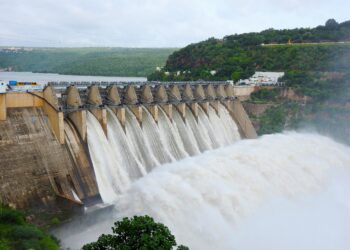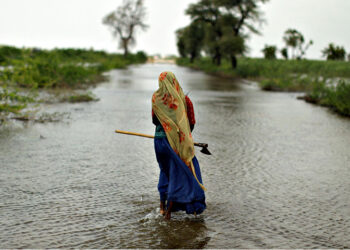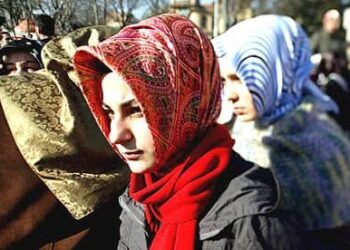The downpour, which began shortly after sunset
led to the tripping of over 700 electricity feeders
leaving numerous neighborhoods in darkness
Sahir Baloch
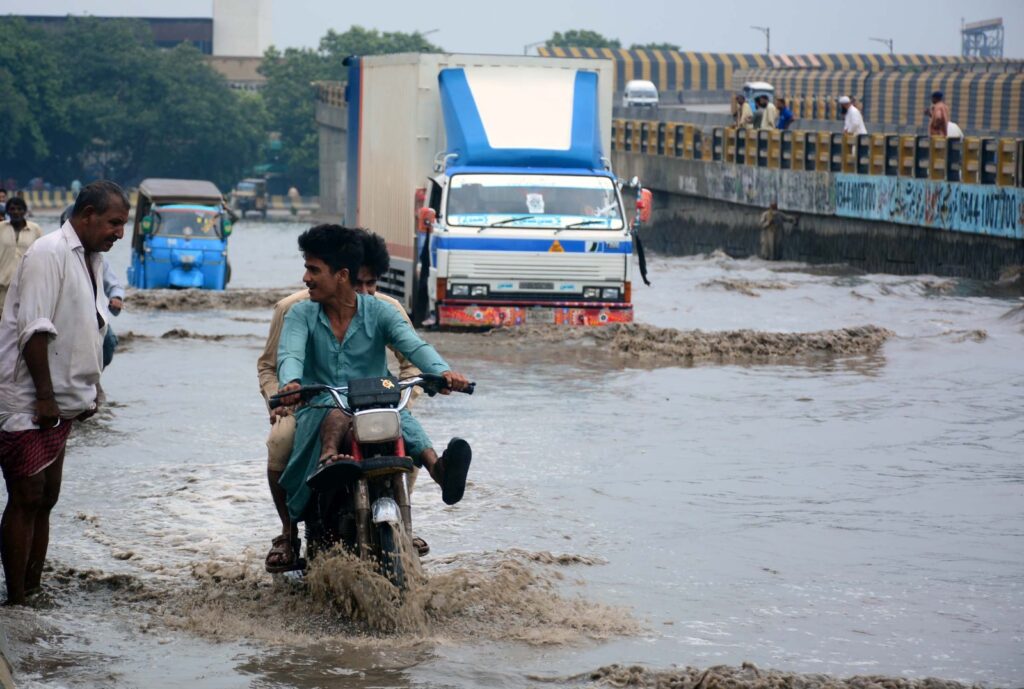
Karachi: Karachi faced severe urban flooding and widespread power outages as heavy rains lashed the city on Saturday evening. The downpour, which began shortly after sunset, led to the tripping of over 700 electricity feeders, leaving numerous neighborhoods in darkness. The Pakistan Meteorological Department (PMD) had accurately forecasted the heavy rains, but the city’s infrastructure struggled to cope with the intensity of the storm.
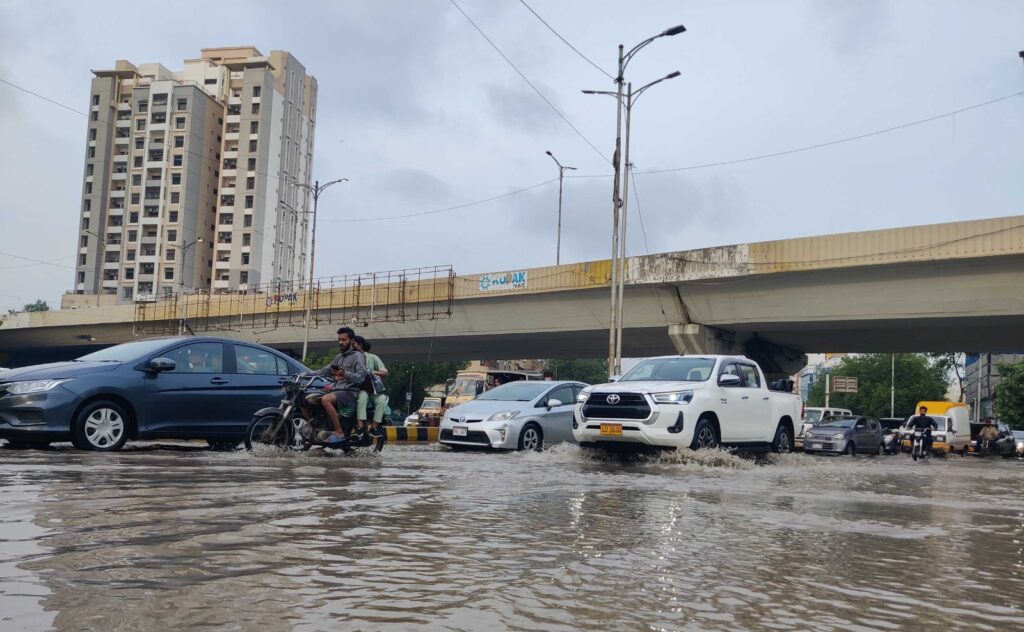
Urban Flooding and Infrastructure Collapse
The rains quickly inundated major arteries across Karachi, transforming roads into rivers. Streets like Shahrah-e-Faisal and Tariq Road were submerged, making travel nearly impossible. Social media platforms were flooded with images and videos of stranded vehicles and flooded roads, with citizens expressing frustration over the recurring issue of inadequate drainage during monsoon seasons.
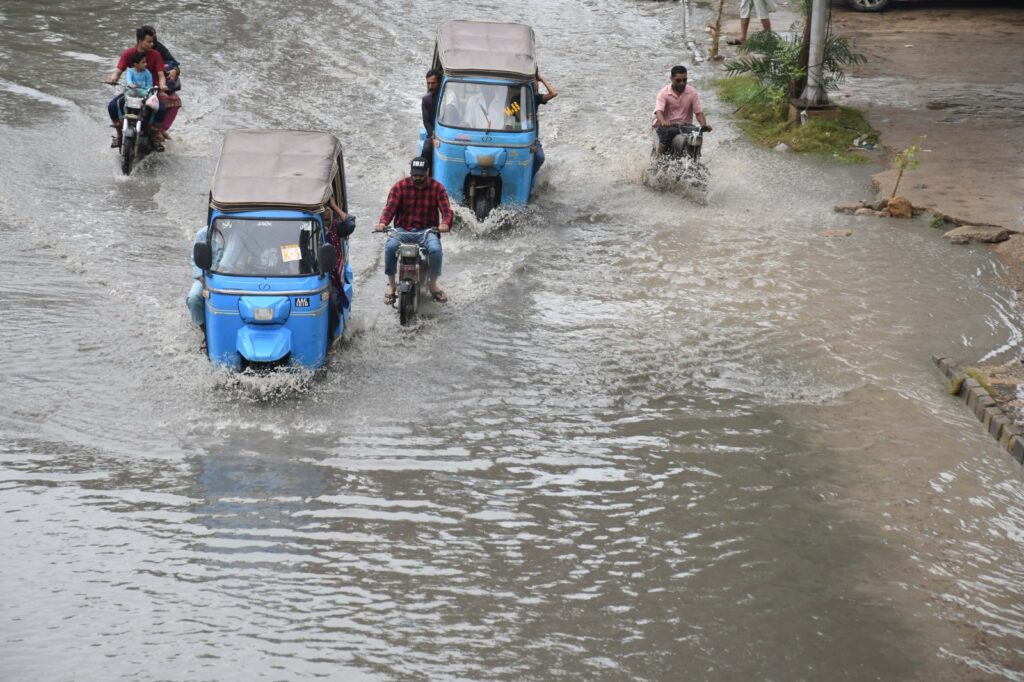
Rescue 1122 issued an advisory urging the public to avoid unnecessary travel as emergency teams struggled to navigate the flooded streets and severe traffic jams. In a statement, the rescue agency confirmed that no buildings had collapsed, but two individuals sustained minor injuries due to a wall collapse near Kashmir Road. The injured were promptly taken to Jinnah Postgraduate Medical Centre for treatment.
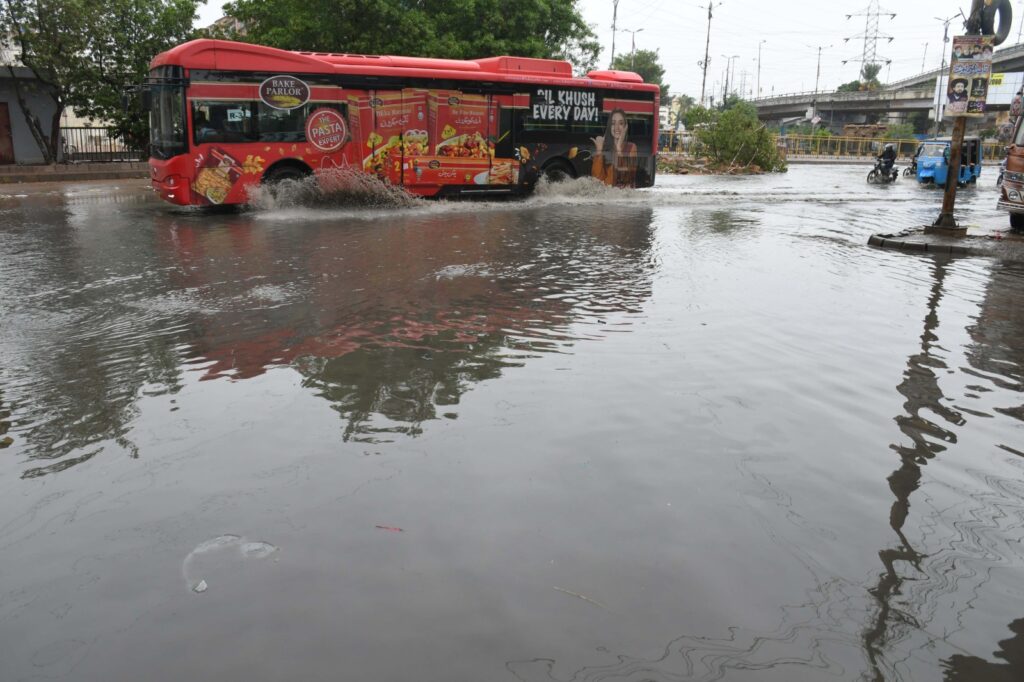
Power Outages Plunge Neighborhoods into Darkness
The heavy rains triggered widespread power outages as K-Electric, the city’s main power supplier, shut down 600 of its 2,100 feeders as a precautionary measure. This left large swathes of Karachi without electricity, further exacerbating the chaos caused by the flooding. Residents in areas such as Gulshan-e-Iqbal, North Nazimabad, and Korangi reported being without power for hours, adding to the growing frustration.
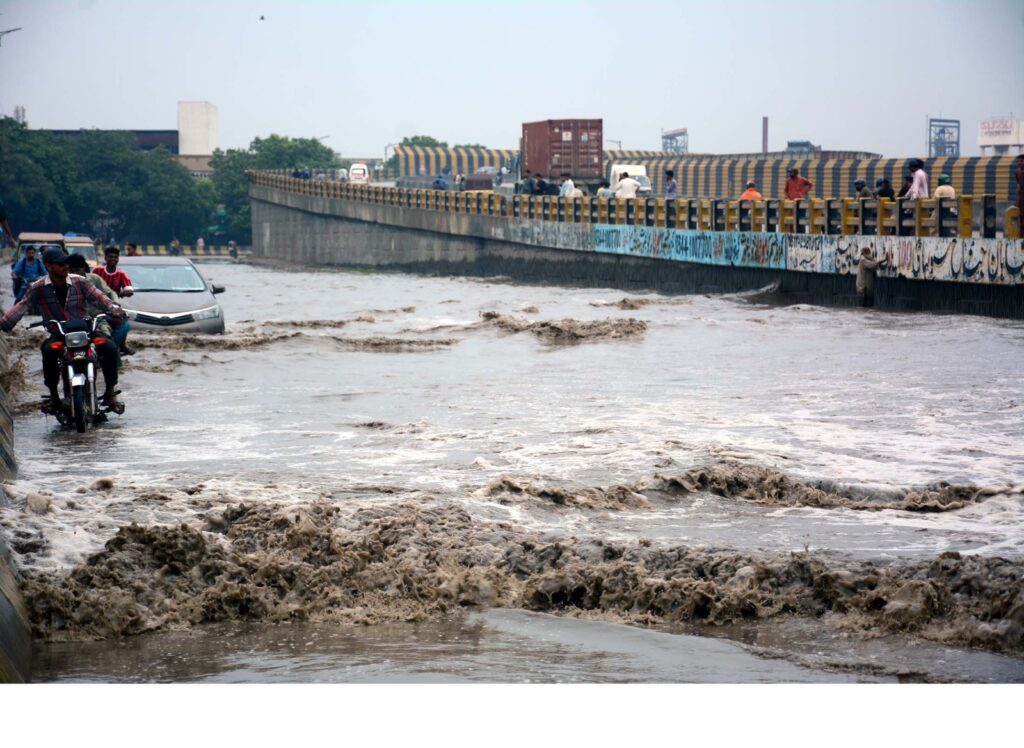
Rainfall Data and Impact on Different Areas
According to data from the PMD, the highest rainfall was recorded at PAF Faisal Base with 75 millimeters, followed by Malir with 64mm, and Surjani Town with 63.8mm. Other areas such as Keamari, Quaidabad, and the old airport area also received significant rainfall, ranging from 51mm to 55mm.
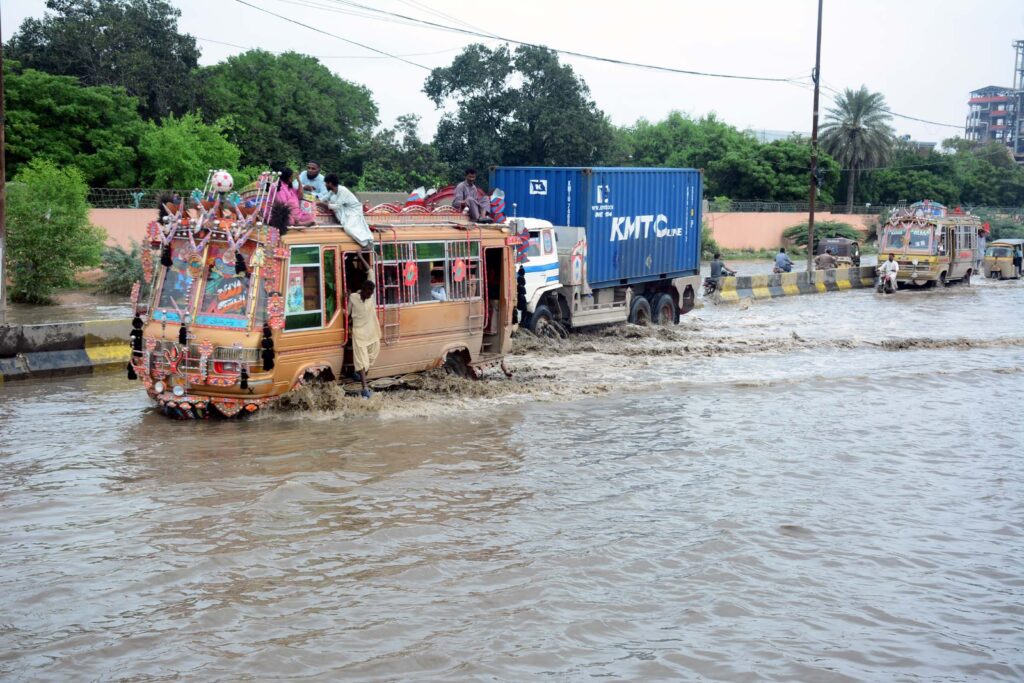
The relentless rains have severely damaged Karachi’s already fragile road infrastructure. Surveys conducted by local authorities and independent observers indicate that 145 locations across the city require immediate attention, with 97 roads destroyed. The Sindh Chief Minister, Syed Murad Ali Shah, has ordered an inquiry into the damage and has called for accountability from contractors who used substandard materials in road construction.
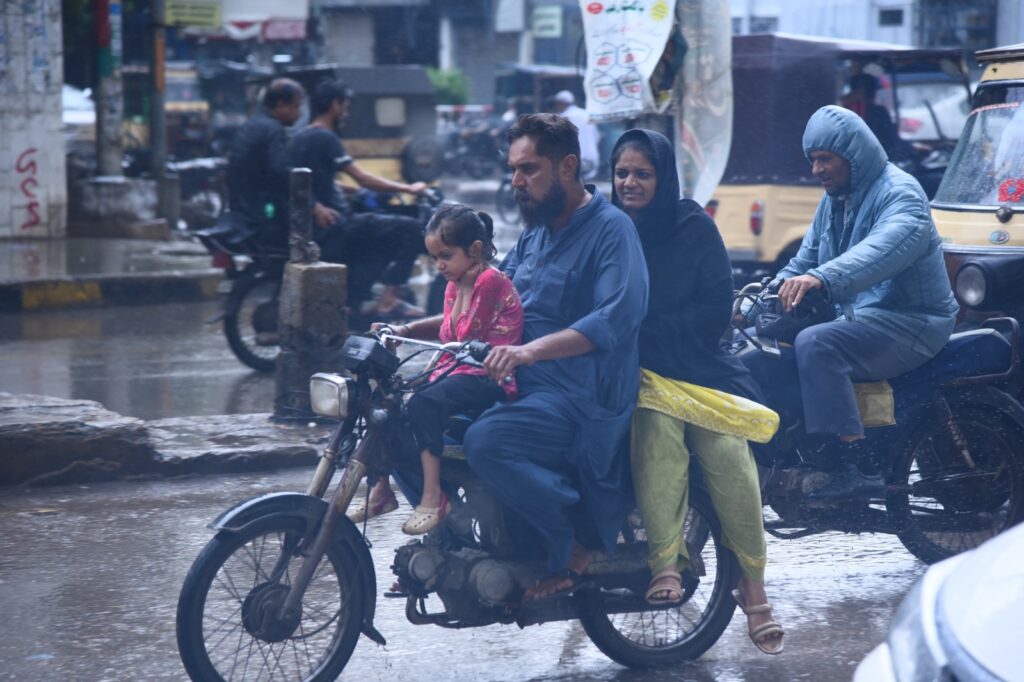
Public Reaction and Criticism of Local Authorities
The citizens of Karachi have voiced their displeasure with the local authorities, criticizing the lack of preparedness and ineffective drainage systems. Many have pointed out that despite repeated assurances from the government, the city faces the same issues every monsoon season. Social media was abuzz with concern and humor, as residents shared their experiences and frustrations online.
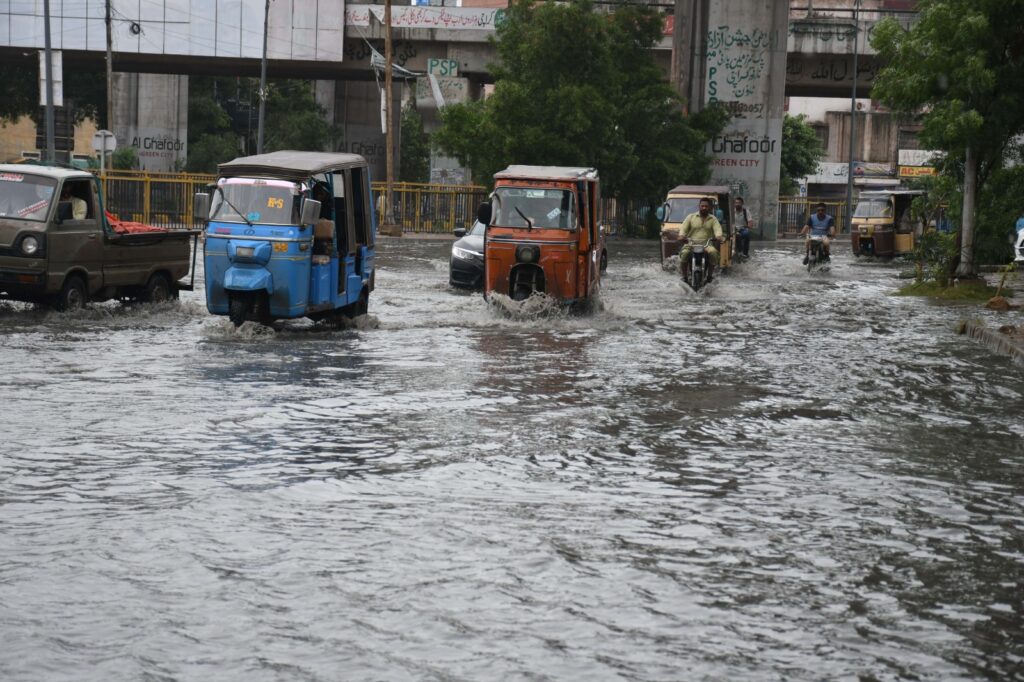
The Mayor of Karachi, Murtaza Wahab, has urged residents to avoid unnecessary movement and assured that teams were working to clear major roads. However, the situation remains dire, with many roads still submerged and traffic at a standstill in several areas.
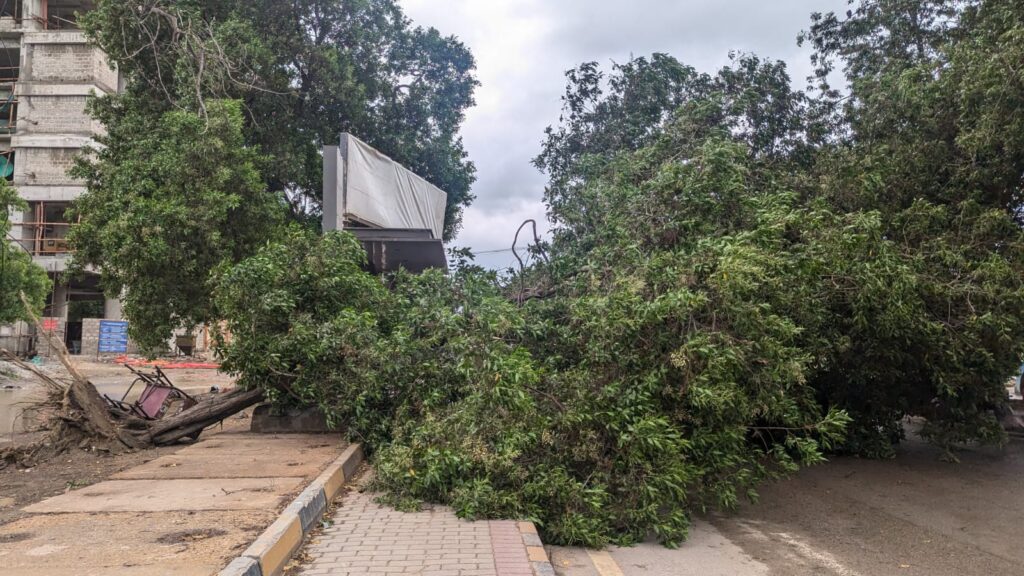
Impact on Daily Life and Economy
The heavy rains have also damaged the city’s economy, with traffic jams paralyzing industrial zones that are crucial for the country’s revenue. Many businesses were forced to shut down early, and employees were stranded in their offices due to the severe flooding. The rainwater, mixed with sewage, further deteriorated road conditions, creating hazardous conditions for motorists and pedestrians.
In conclusion, the heavy rains in Karachi have once again highlighted the city’s vulnerability to monsoon weather. As authorities work to restore normalcy, residents are left grappling with the aftermath of yet another season of floods and power outages.


